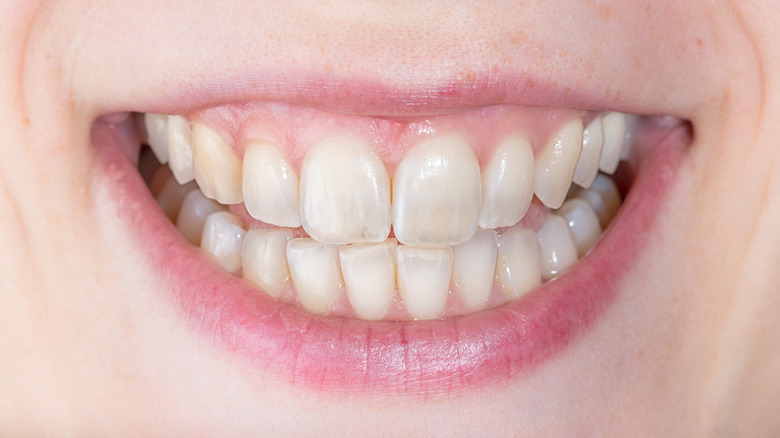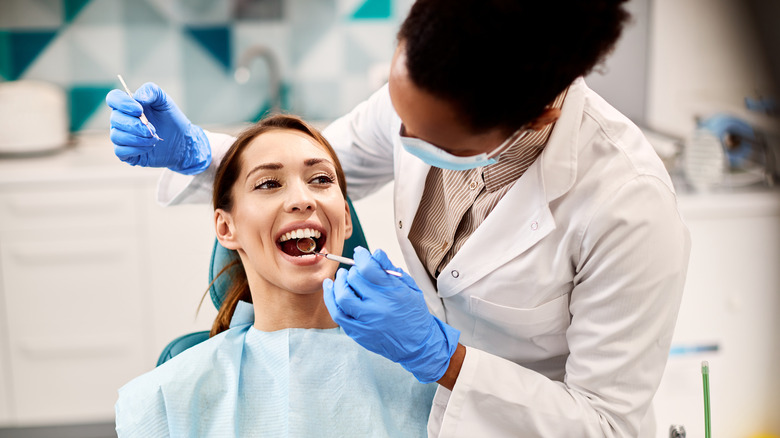Is It Possible To Repair Damaged Tooth Enamel?
Tooth enamel is the outer layer on your teeth that's hard and appears shiny. According to Pronamel, tooth enamel covers important underlying tissues and is stronger than bone, making it the hardest substance in the body. Approximately 96% of a tooth's enamel is made up of minerals like calcium and phosphorus. These minerals provide protection to the teeth to keep them healthy and strong by forming hard crystallites. Tooth enamel can appear in different colors, such as light yellow or gray-white, but eventually erodes, or wears away with time.
The job of tooth enamel is simple: to protect your teeth. Tooth enamel protects dentin and pulp, two fragile areas of the teeth underneath the enamel, Colgate reports. Enamel works to prevent tooth decay; however, it is possible for tooth enamel to become damaged over time. When enamel is damaged, it can lead to other dental problems, like cavities, infection, or sensitivity.
Repairing damaged tooth enamel
Despite enamel being the hardest substance in the human body, it is not possible to repair damaged tooth enamel. Typically, the human body is able to heal itself after many injuries, such as a broken bone. With tooth enamel, it's just the opposite, so healthy oral hygiene is key. According to Humana, enamel cannot repair its own damage because it doesn't have any living cells.
Damage to tooth enamel is known as tooth erosion, and can be caused by a number of things. WebMD reports tooth erosion can happen from consuming drinks high in acid, like fruit drinks, or eating foods high in starches, sugars, or acid. Tooth erosion doesn't occur just from your diet, though. Damage to your tooth's enamel can also occur as a result of acid reflux disease, when stomach acid enters the mouth, or simply from genetics.
Although tooth enamel cannot be restored, weakened tooth enamel does have a chance of restoration with a process known as remineralization, Dental Health Associates reports. During this process, minerals are reintroduced, forming a compound on the teeth. In addition to flossing and using toothpaste and mouthwashes high in calcium phosphate or fluoride, keep up to date with your dental cleanings for healthy pearly whites.


